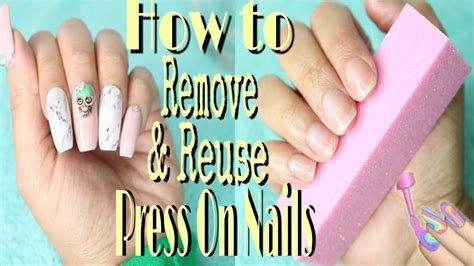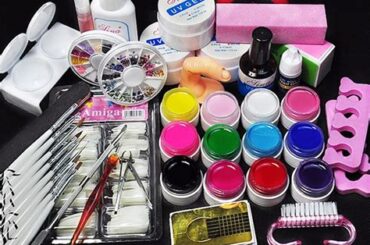Gentle nail polish removal techniques
Removing nail polish can sometimes be a challenging task, especially if you want to avoid damaging your nails. Using gentle nail polish removal techniques is essential to keep your nails healthy and strong. Instead of resorting to harsh chemicals and aggressive methods, there are several gentle methods that can effectively remove nail polish without causing any harm. In this blog post, we will explore some of these techniques to help you maintain the health and beauty of your nails.
One of the most effective and gentle ways to remove nail polish is by using acetone-free nail polish removers. Unlike traditional nail polish removers that contain acetone, which can cause dryness and weaken the nails, acetone-free removers are a safer option. They are formulated with milder ingredients that are less harsh on the nails while effectively removing the polish. Look for removers that contain moisturizing agents such as glycerin or vitamin E to provide additional nourishment for your nails during the removal process.
Another gentle technique to remove nail polish is by soaking your nails in warm water. This method not only helps to soften the polish but also makes it easier to remove. Fill a bowl with warm water and soak your nails for a few minutes until the polish starts to loosen. Gently rub your nails using a soft cloth or a cotton pad to wipe away the polish. This technique is particularly useful for removing stubborn glitter or dark nail polish that can be more difficult to take off.
In addition to acetone-free removers and warm water soaking, another gentle way to remove nail polish is by using oil-based nail polish removers. These removers are formulated with nourishing oils such as jojoba, almond, or olive oil, which help to moisturize and protect the nails while removing the polish. Apply a small amount of the oil-based remover onto a cotton pad and gently rub it over your nails. The polish will gradually dissolve, allowing you to wipe it away easily without damaging your nails.
- Acetone-free nail polish removers
- Soaking your nails in warm water
- Oil-based nail polish removers
| Technique | Benefits |
|---|---|
| Acetone-free nail polish removers | Gentle on the nails, moisturizing, effective in removing polish |
| Soaking your nails in warm water | Softens the polish, easier removal, particularly useful for stubborn polish |
| Oil-based nail polish removers | Moisturizing, nourishing, protects the nails, easy removal |
By utilizing these gentle nail polish removal techniques, you can maintain the health and strength of your nails while effectively removing the polish. Remember to always be gentle and avoid excessive rubbing, as this can lead to nail damage and dryness. Take care of your nails and enjoy the process of removing nail polish with these safe and effective methods.
Using acetone-free nail polish removers
The use of nail polish has become increasingly popular among people of all ages. It adds a touch of color and sophistication to our hands and feet. However, the process of removing nail polish can sometimes be a hassle. Traditional nail polish removers often contain acetone, a harsh chemical that can be damaging to the nails and cuticles. Fortunately, there are acetone-free nail polish removers available on the market that offer a gentler alternative.
Acetone-free nail polish removers are considered a safer and more gentle option for removing nail polish. These removers do not contain harsh chemicals like acetone, which can strip the natural oils from the nails and leave them dry and brittle. Instead, they are formulated with alternative solvents that effectively dissolve and remove the polish without causing damage to the nails.
One of the key benefits of using acetone-free nail polish removers is that they are less drying to the nails. Acetone can be extremely drying and can lead to nail breakage and splitting. In contrast, acetone-free removers are designed to be more nourishing and moisturizing, helping to keep the nails in better condition.
- Gentle on the nails: Unlike traditional nail polish removers, acetone-free removers are gentle on the nails and cuticles, making them a great choice for those with dry or brittle nails.
- No harsh odor: Acetone-free nail polish removers typically have a milder scent compared to their acetone-based counterparts, making the nail polish removal process more pleasant.
- Less damage: Since acetone-free nail polish removers do not contain harsh chemicals, they are less likely to cause damage to the nail bed or cuticles.
| Brand | Type | Price |
|---|---|---|
| Sally Hansen | Acetone-Free | $5.99 |
| Zoya | Acetone-Free | $7.50 |
| Cutex | Acetone-Free | $4.99 |
When using acetone-free nail polish removers, it is important to remember to apply the product to a cotton ball or pad and gently rub it over the nail until the polish is fully removed. It may require slightly more effort and time compared to acetone-based removers, but the benefits to your nails are worth it.
In conclusion, using acetone-free nail polish removers is a safer and gentler alternative to traditional removers. Not only do they effectively remove the polish, but they also help to keep the nails in better condition. Remember to choose a reputable brand and follow the instructions for best results. Say goodbye to dry and damaged nails and hello to a healthier nail care routine!
Soaking your nails in warm water
Soaking your nails in warm water is a simple yet effective technique to remove stubborn nail polish and keep your nails healthy. It is a gentle alternative to harsh acetone-based nail polish removers that can often lead to dry and brittle nails. By following the right steps and using warm water, you can easily dissolve the nail polish and make it easier to remove without causing damage to your nails.
Firstly, prepare a bowl of warm water. Make sure the water is comfortably warm and not too hot to avoid any discomfort. You can add a few drops of gentle soap or a mild shampoo to the warm water to help with the removal process.
Next, soak your nails in the warm water for about 10-15 minutes. This allows the warm water to penetrate the layers of nail polish and loosen its adhesive properties. While your nails are soaking, you can take this time to relax and pamper yourself.
- Make sure not to use hot water as it can weaken the nails and may cause damage.
- Avoid using harsh soaps or shampoos that can strip away natural oils from your nails and make them brittle.
- For an added benefit, you can also add a few drops of essential oils such as lavender or tea tree oil to the warm water. These oils not only provide a pleasant aroma but also have properties that promote nail health.
| Pros | Cons |
|---|---|
| Gentle and non-damaging to nails | May take longer time compared to other methods |
| Helps in maintaining nail health | May not be as effective in removing gel or glitter nail polish |
| Can easily be done at home with readily available materials | Requires patience and time |
After soaking your nails, gently pat them dry with a clean towel. You may notice that the nail polish has started to lift, making it easier to remove with a gentle swipe of a cotton ball or a soft cloth. If there are any traces of nail polish remaining, you can use a nail polish remover to clean them off. Remember to choose an acetone-free nail polish remover to prevent further drying of your nails.
In conclusion, soaking your nails in warm water is a simple and effective method to remove nail polish without causing damage to your nails. It helps to dissolve the nail polish and make it easier to remove, leaving your nails clean and healthy. Remember to be patient and take your time during the process, and always follow up with proper nail care to maintain good nail health.
Using oil-based nail polish removers
Using oil-based nail polish removers is a great alternative to acetone-based removers for those who have dry and brittle nails. These removers are gentle on the nails and cuticles, providing a nourishing effect while effectively removing the nail polish. The oil-based formula helps to moisturize the nails, preventing them from becoming dehydrated and brittle. Additionally, oil-based removers are less likely to cause damage to the nail bed, making them a healthier option.
One of the main advantages of using oil-based nail polish removers is that they are less harsh on the nails compared to acetone-based removers. Acetone is a strong solvent that can strip the nails of their natural oils, leaving them dry and prone to breakage. On the other hand, oil-based removers contain moisturizing ingredients that help to replenish the oils in the nails, keeping them hydrated and healthy.
When using oil-based removers, it is important to follow the proper technique for effective polish removal. Start by applying a small amount of the oil-based remover to a cotton ball or pad. Gently press the cotton ball onto the nail and hold it for a few seconds to allow the remover to penetrate the polish. Then, slowly and smoothly wipe the cotton ball across the nail in one direction, avoiding rubbing back and forth as this can potentially damage the nail surface.
- Choose an oil-based nail polish remover that contains natural oils like jojoba, almond, or soybean oil.
- Dip a clean cotton ball or pad into the remover and saturate it with a moderate amount of product.
- Press the saturated cotton ball onto the nail and hold it for a few seconds to allow the remover to dissolve the polish.
- Wipe the cotton ball across the nail in one direction, from the base to the tip, until the polish is completely removed.
- Repeat the process for each nail, using a fresh cotton ball or pad as needed.
After using an oil-based nail polish remover, it is recommended to wash your hands with mild soap and warm water to remove any residue. This will ensure that your nails are clean and ready for a fresh coat of polish or for any nail treatments. Additionally, it is beneficial to apply a cuticle oil or moisturizing nail treatment after polish removal to further nourish and hydrate the nails.
| Pros of Using Oil-Based Nail Polish Removers | Cons of Using Oil-Based Nail Polish Removers |
|---|---|
| Moisturizes and nourishes the nails | May take longer to remove stubborn or glitter nail polishes |
| Gentle on the nails and cuticles | Slightly more expensive compared to acetone-based removers |
| Less likely to cause damage to the nail bed | May require more effort to remove multiple coats of polish |
Overall, using oil-based nail polish removers can be a beneficial choice for those who want to minimize the potential damage caused by acetone-based removers. With their moisturizing properties and gentle formula, these removers provide an effective and healthier option for removing nail polish while keeping the nails and cuticles hydrated. Remember to choose an oil-based remover with natural oils, follow the proper technique, and follow up with a moisturizing nail treatment for optimal nail care.
Filing and buffing to remove nail art
Filing and buffing is a common technique used to remove nail art and stubborn nail polish. It involves using a nail file or buffer to gradually remove the design or color from the nails. This method is often preferred by individuals who want to avoid the use of harsh chemicals or acetone-based removers.
When it comes to removing nail art using filing and buffing, there are a few key steps to follow. First, gather the necessary tools including a nail file or buffer, a cuticle pusher, and a gentle nail polish remover. Begin by gently pushing back the cuticles and ensuring that the nails are clean and dry.
Next, use the nail file or buffer to gradually file away the nail art. Start by filing in one direction, moving from the base of the nail to the tip. Be gentle and take your time to avoid damaging the natural nail underneath. Emphasize the areas with the most nail art or color, and continue filing until the design is significantly reduced or completely removed.
After filing, switch to the buffer side of the tool to smooth out the surface of the nail. Buffing helps to further remove any remaining color or design, resulting in a clean and even nail surface. Be careful not to over-buff, as this can lead to thinning of the nails.
Once the filing and buffing process is complete, rinse the nails with warm water to remove any debris or dust. Finish off by moisturizing the nails and cuticles with a nourishing oil or cream. This step helps to replenish any moisture lost during the removal process and keeps the nails healthy.
- Use a nail file or buffer
- Gently push back cuticles
- File in one direction
- Emphasize areas with the most design
- Switch to buffer to smooth out the surface
- Rinse with warm water
- Moisturize nails and cuticles
| Pros | Cons |
|---|---|
| Does not require harsh chemicals | May require more time and effort compared to other methods |
| Gentler on the nails | Potential risk of over-filing or thinning the nails if not done properly |
| Can be done at home without professional assistance | Not suitable for removing certain types of nail art, such as textured designs |
Frequently Asked Questions
1. What are some gentle nail polish removal techniques?
Some gentle nail polish removal techniques include using acetone-free nail polish removers, soaking your nails in warm water, and using oil-based nail polish removers.
2. How does using acetone-free nail polish remover work?
Acetone-free nail polish removers work by using alternative ingredients, such as ethyl acetate or natural solvents, to break down the nail polish without drying out the nails.
3. How can soaking your nails in warm water help with nail polish removal?
Soaking your nails in warm water can help soften the nail polish, making it easier to remove. Simply fill a bowl with warm water and soak your nails for 5-10 minutes before gently wiping off the polish.
4. What are the benefits of using oil-based nail polish removers?
Oil-based nail polish removers provide additional moisture and nourishment to the nails while removing the polish. They are also gentle on the cuticles and surrounding skin.
5. How can filing and buffing help remove nail art?
Filing and buffing can help remove nail art by gradually wearing down the layers of polish. Start by gently filing the top layer of the nail art, then slowly buff away the remaining polish until the desired removal is achieved.
6. Are gentle nail polish removal techniques suitable for all types of nail polish?
Gentle nail polish removal techniques are generally suitable for most types of nail polish, including regular, gel, and glitter polishes. However, for particularly stubborn or long-lasting polishes, you may need to use a stronger remover.
7. Are there any precautions to take when using these gentle nail polish removal techniques?
When using gentle nail polish removal techniques, it’s important to avoid excessive rubbing or scraping, as this can damage the nails. Also, remember to moisturize your nails and cuticles after removal to keep them hydrated.





